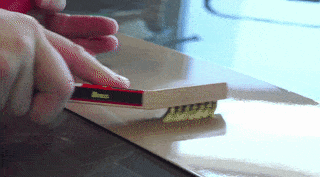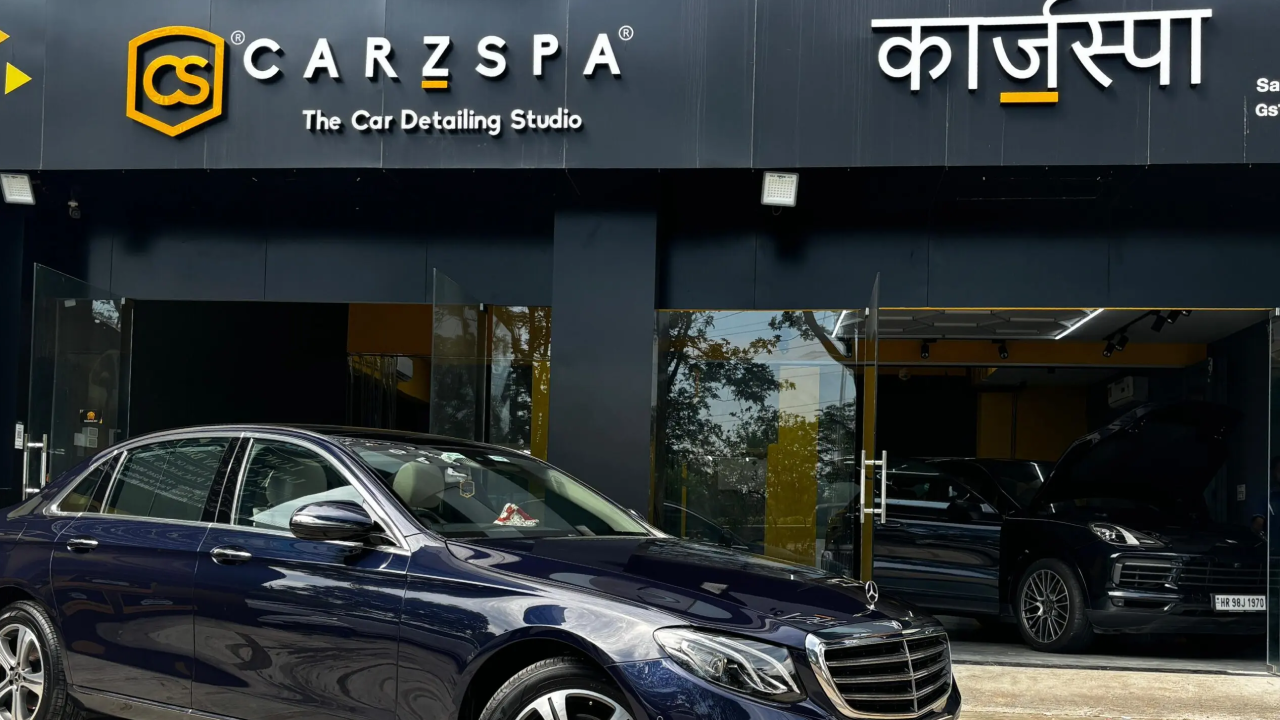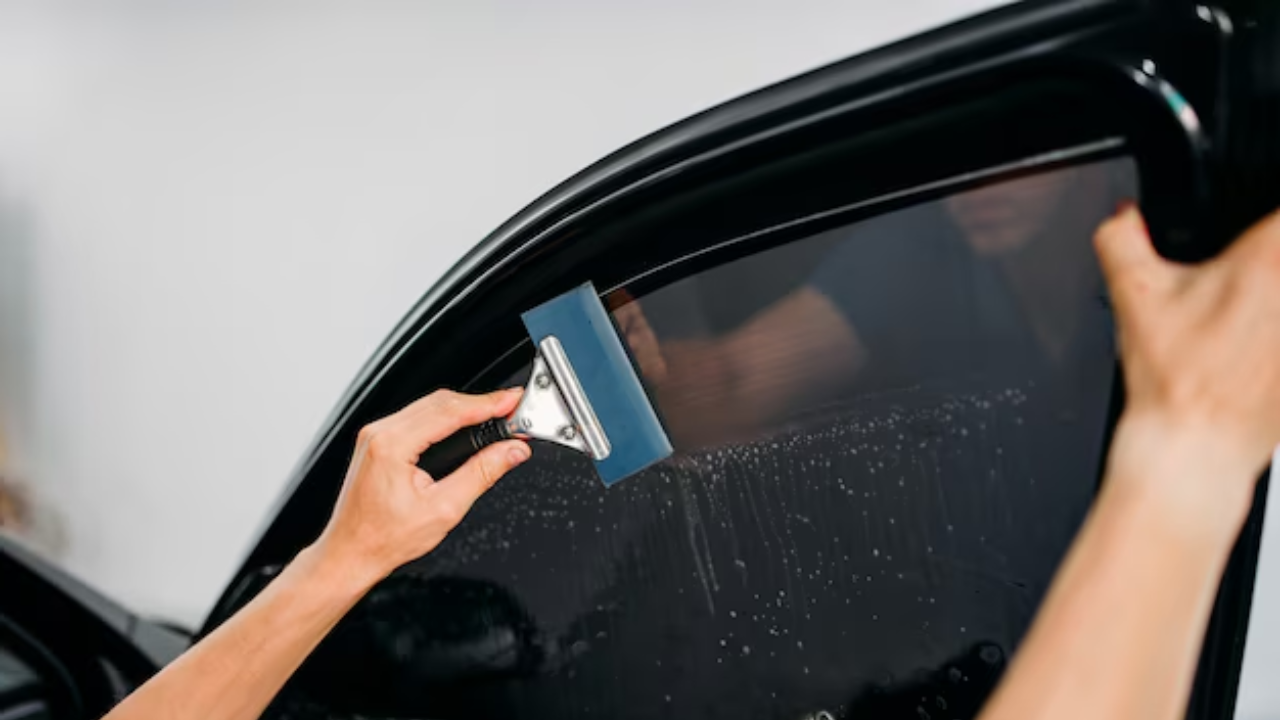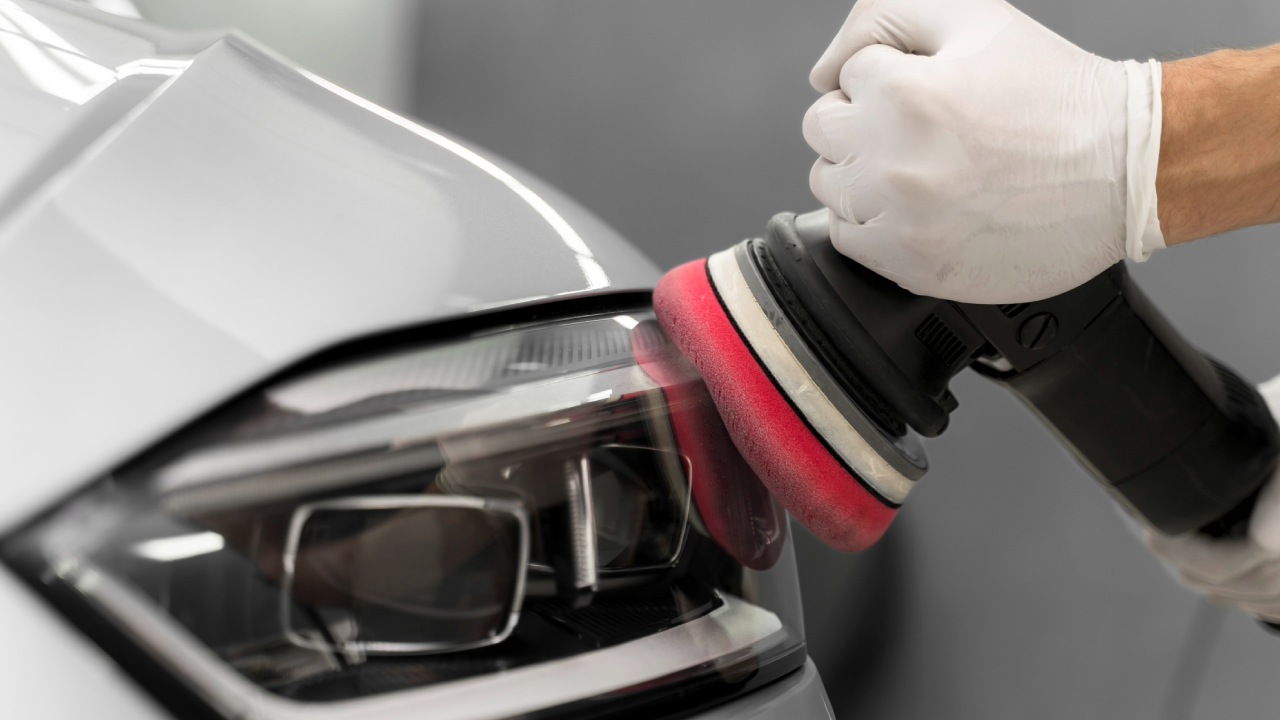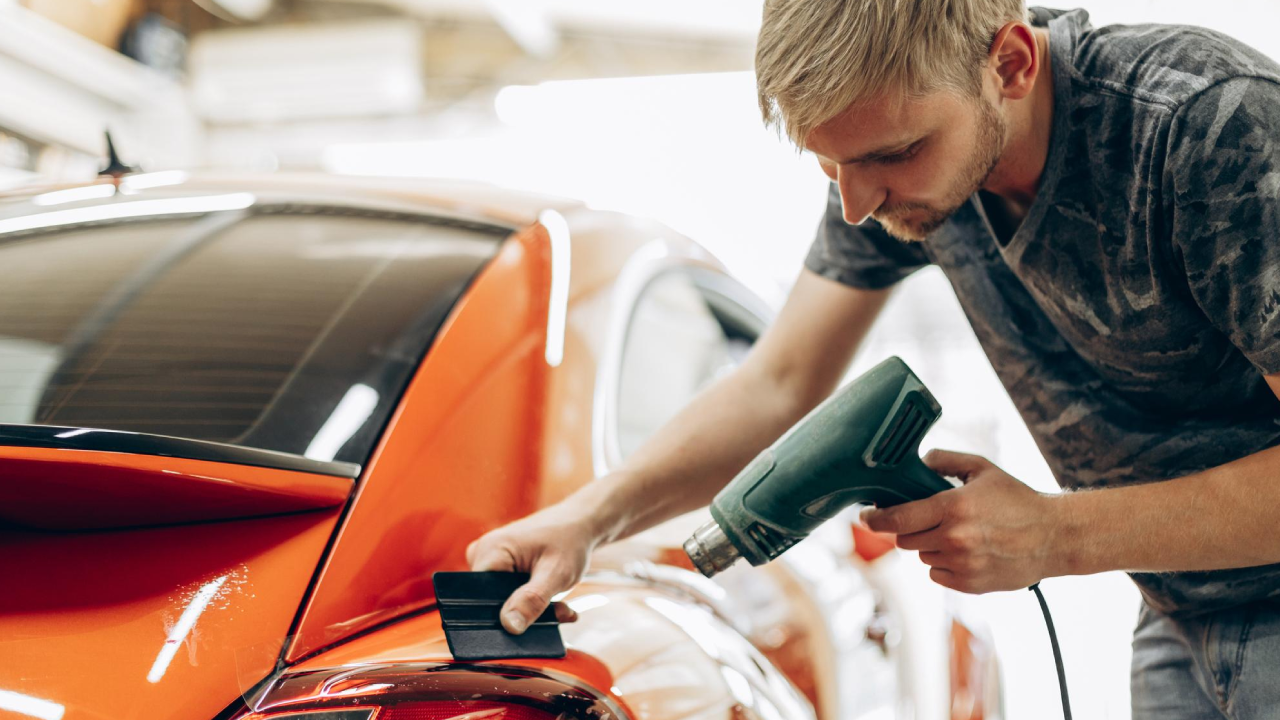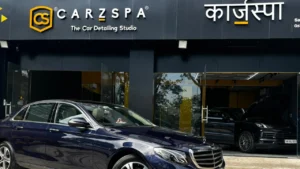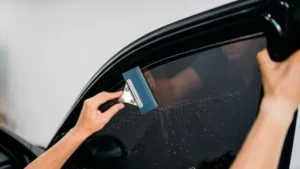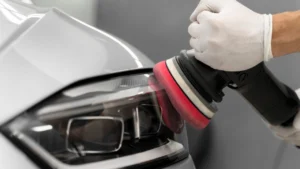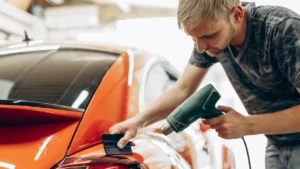We know, your car is more than just a vehicle for you, it’s an extension of your personality. Naturally, you want to keep it new and shining just like the day it left the showroom. Yes, car detailing services do help, but this is where paint protection films (PPF) step in. PPFs not only gives your car a glossy, shiny look but also adds a layer of self-healing protection for your car. But what’s the secret behind these films that give so much protection to your car? What is it made of and how does it work its magic? To get your answers, let’s go a little deeper into the making of paint protection films and know the professional installation process, benefits and more.
Table of Contents
Introduction to Paint Protection Films
Paint protection film (PPF) is a clear, flexible film that is applied to a car’s paint to protect it from scratches, chips and UV damage. PPF takes the car care and protection to a different level. PPF is made of a durable material that can absorb and disperse the energy of impacts, preventing them from reaching the paint. It is also self-healing, so minor scratches and blemishes can be repaired over time.
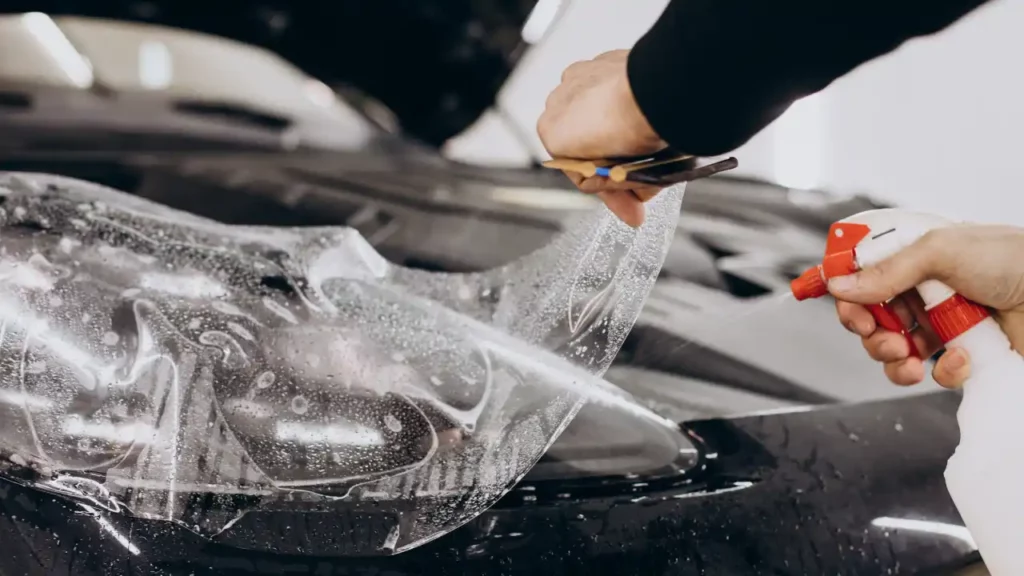
Paint protection films in India cost in the range of Rs. 65,000 to Rs. 2,30,000 and above (depending on the car’s type and size). The significance of PPF is beyond aesthetics; it’s about maintaining your car’s value over the years. However, it is important to have a professional installation of the PPF on your car. Let’s take a look at the types of PPFs available in the market..
Varieties of Paint Protection Films
There are three primary types of paint protection films (PPFs): those made of PVC, TPH and TPU. PVC-based films were an early choice but proved brittle and prone to breakage, causing damage to the underlying paint. This led to the development of more advanced solutions like TPH and TPU films.
TPH, a hybrid of PVC and TPU, strikes a balance between performance and cost comparison. It comprises a specific percentage of both materials to offer decent protection while being more budget-friendly. Notably, the Aegis Hybrid employs TPH technology, providing an optimal blend of durability and affordability.
Application of PPF is a very skilled task and only those detailers who have received training and have gained considerable experience in professional installation can do this job to perfection. Do not fall for products that claim to be DIY paint protection films.
On the premium end, TPU PPFs reign supreme. Their exceptional protection capabilities stem from their high cross-linking structure, ensuring robustness and longevity. Unlike PVC, TPU doesn’t succumb to brittleness, maintaining its integrity over time. TPU PPFs are the best choice for those who want the most protection for their car’s paint. However, they are also the most expensive type of PPF.
PPFs come in various thicknesses, ranging from 150 to 195 microns, offering different levels of defence against scratches, chips and other hazards. Additionally, PPFs are available in both colour and transparent options. Within the transparent category, TPU and TPH films provide top-tier protection and versatility.
Composition of Paint Protection Films
Paint protection films (PPFs) are thin layers of material that protect the car’s paint from scratches, chips, stains and UV rays. PPFs are usually composed of five layers, but only the middle three are applied on the car’s surface. The first and the fifth layer are Cap Sheets and Release Liners that are removed before installation. They usually keep the crucial layers protected and clean until installation.
The middle three layers are:
Self-healing top coat
This is the outermost layer that faces the environment. It is a clear coat that protects the film from contaminants and gives it a glossy finish. It also has self-healing properties, which means it can heal minor scratches and swirl marks with heat or time. The thickness of this layer is about 15 microns or 0.59 mils.
TPU/TPH layer
This is the core layer that provides the strength and durability of the film. It is made of thermoplastic polyurethane (TPU) or thermoplastic hybrid (TPH), which are flexible and resistant materials that can conform to the curves and contours of the car. The thickness of this layer can range anywhere between 140 to 160 microns. This is the thickest and the main layer.
Pressure-sensitive adhesive (PSA)
This is the innermost layer that adheres the film to the car’s paint. It is a sticky substance that activates with pressure and allows the film to bond with the surface. The thickness of this layer ranges between 20 to 25 microns, i.e. somewhere around 1 mil.
These layers collectively contribute to PPFs’ effectiveness in each layer to optimise protection and preserve the original look and feel of the paint while preventing damage from various aggressors. DIY paint protection is not something we’d advise. Because it requires expert applicators to get the job done right and provide maximum protection for your car’s paint. The best paint protection film in India depends on your budget, the level of protection you need and your location.
Paint Protection Films involve some complicated science
PPFs are not just simple stickers that you apply to your car’s paint. They are sophisticated products that involve some complex science and engineering. Here are some of the aspects that make PPFs effective and reliable:
Self-healing technology
One of the most remarkable features of PPFs is their ability to heal themselves from minor scratches and swirl marks. This is possible because the top coat of the film has a memory effect, which means it can return to its original shape when exposed to heat or time. There are two types of self-healing technology: instant and delayed. Instant self-healing PPFs can recover from scratches in seconds with application of a direct heat source, while delayed self-healing PPFs need some time to restore their smoothness at room temperature. Delayed self-healing PPFs are usually preferred, as they have a harder top coat that can resist more damage, last longer and have less orange peel effect.
Elongation at break
This is a measure of how much the film can stretch before it breaks. It indicates the film’s ability to absorb and distribute impact forces across its surface, minimising the potential damage to the paint. PPFs typically have an elongation at break ranging from 300% to 500%, depending on the material and thickness.
Tensile strength
This is a measure of how much force the film can withstand before it tears or breaks. It indicates the film’s durability and resistance to wear and tear. PPFs usually have a high tensile strength ranging between 20 to 30 Nm (measured in units of force per unit area) which ensures their longevity and sustained protection.
Colour change
This is a concern for transparent PPFs, as they may change colour over time due to exposure to UV rays, heat, or chemicals. The colour difference is measured by ΔE, which affects the yellowing intensity in these films. PPFs made of thermoplastic polyurethane (TPU) or thermoplastic hybrid (TPH) exhibit this phenomenon differently, but ideally, the lower the ΔE, the better the colour stability. Aegis Ultra 250, CarzSpa’s premium paint protection film made with the specialisation to combat harsh weathers of the South Asian subcontinent, has just ΔE<0.7, which indicates reduced colour alteration over time.
At CarzSpa Detailing Studios, we are always striving to provide the best paint protection solutions for our customers. That’s why our R&D department is now working towards innovating our PPF up to 300 microns, which makes it more durable and suitable for the harsh Indian conditions outdoors. DIY paint protection film installation is not advisable at all. Professional installation is always the best option to ensure that the film is applied correctly and will provide maximum protection for your car’s paint.
Some concluding thoughts…
Just as you prioritise your car’s exterior, don’t overlook its interior cleanliness. Explore car interior cleaning services in India and get car washing services from a professional car detailer like CarzSpa Detailing Studios.
In conclusion, take proper care of both the inside and outside of your car and avoid doing DIY paint protection to prioritise its well-being and enjoy the benefits of a well-protected and visually appealing vehicle. You can visit your nearest CarzSpa Detailing Studio in your city for car paint protection services in India and get your vehicle PPF installed.
Frequently Asked Questions
1. Will the PPF be noticeable after it is applied?
While the film’s edge may be visible from certain angles, most people miss it unless they are specifically looking for it.
2. How long does paint protection film last?
Completely depends on the quality of the films, its thickness and proper maintenance of the car. The best quality films like Aegis PPF can last anywhere between 7-10 years.
3. How do you wash a car with PPF?
Avoid pressure washing at the edges. No Automatic Washes also. Please refer to our Aegis After Care Guide.
4. Can paint protection film be removed ?
Yes, but professional removal is recommended to prevent damage to your car’s paint or finish.


